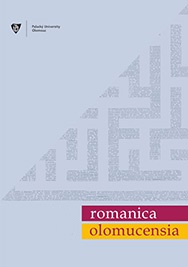Tal vez es X vs. Tal vez sea X. Construcciones de probabilidad y el uso de los modos
Tal vez es X vs. Tal vez sea X. Probability constructions and the use of mood
Author(s): Anja HennemannSubject(s): Syntax, Lexis, Pragmatics, Cognitive linguistics
Published by: Univerzita Palackého v Olomouci
Keywords: expression of probability; mood; Spanish; Cognitive Construction Grammar; qualitative analysis;
Summary/Abstract: This paper is concerned with constructions that express probability and their interaction with the indicative and subjunctive mood, as well as with other contextual elements. In detail, the paper deals with the constructions [sin duda + indicative/subjunctive], [tal vez + indicative/subjunctive], [probablemente + indicative/subjunctive] and [posiblemente + indicative/subjunctive]. In their interaction with mood, the constructions are understood as different microconstructions. For example, [sin duda + indicative] and [sin duda + subjunctive] are seen as different microconstructions of the superordinate mesoconstruction [modal construction (of probability) + verb]. In a qualitative analysis examples from the CREA, CORPES XXI, and CdE corpora are examined regarding the interaction of [expression of probability] + [mood]. Following the Principle of No Synonymy of Grammatical Forms, the analysis confirms that the use of mood additionally influences the expressed degree of probability of the constructions. For instance, while probablemente generally expresses a slightly higher probability than posiblemente, a fine-tuned analysis shows that the expressed degrees of probability of [probablemente + subjunctive] and [posiblemente + indicative] are highly similar. This is also often confirmed by further contextual information. In summary, the paper shows that Cognitive Construction Grammar is a very suitable background against which to investigate modal phenomena, as cognitive approaches generally deal with the ways in which language users conceptualize the world from their own point of view, and as expressions of modality, more precisely, probability, are also closely related to speakers’ attitudes or perspectives.
Journal: Romanica Olomucensia
- Issue Year: 32/2020
- Issue No: 1
- Page Range: 51-71
- Page Count: 21
- Language: Spanish

